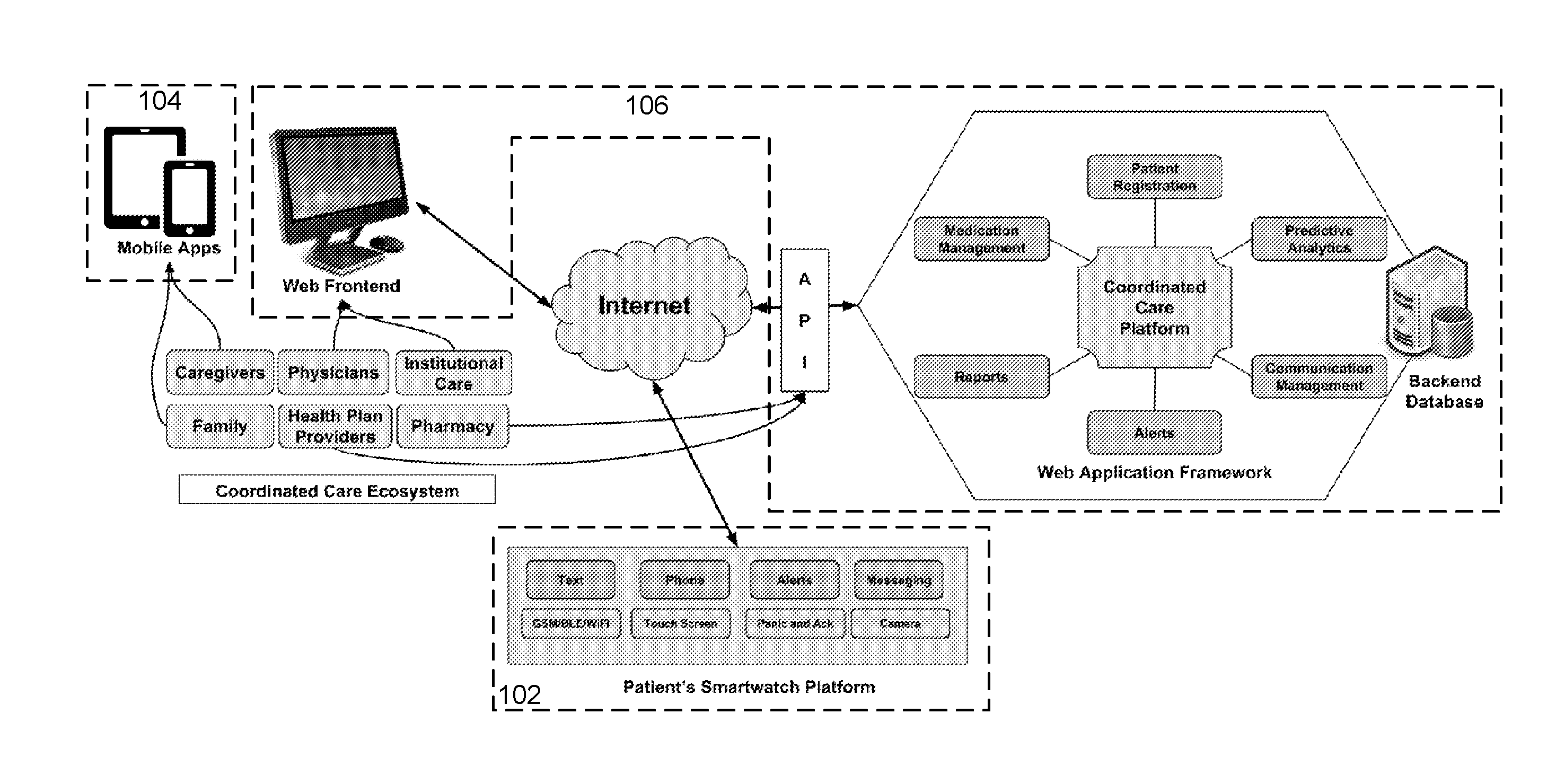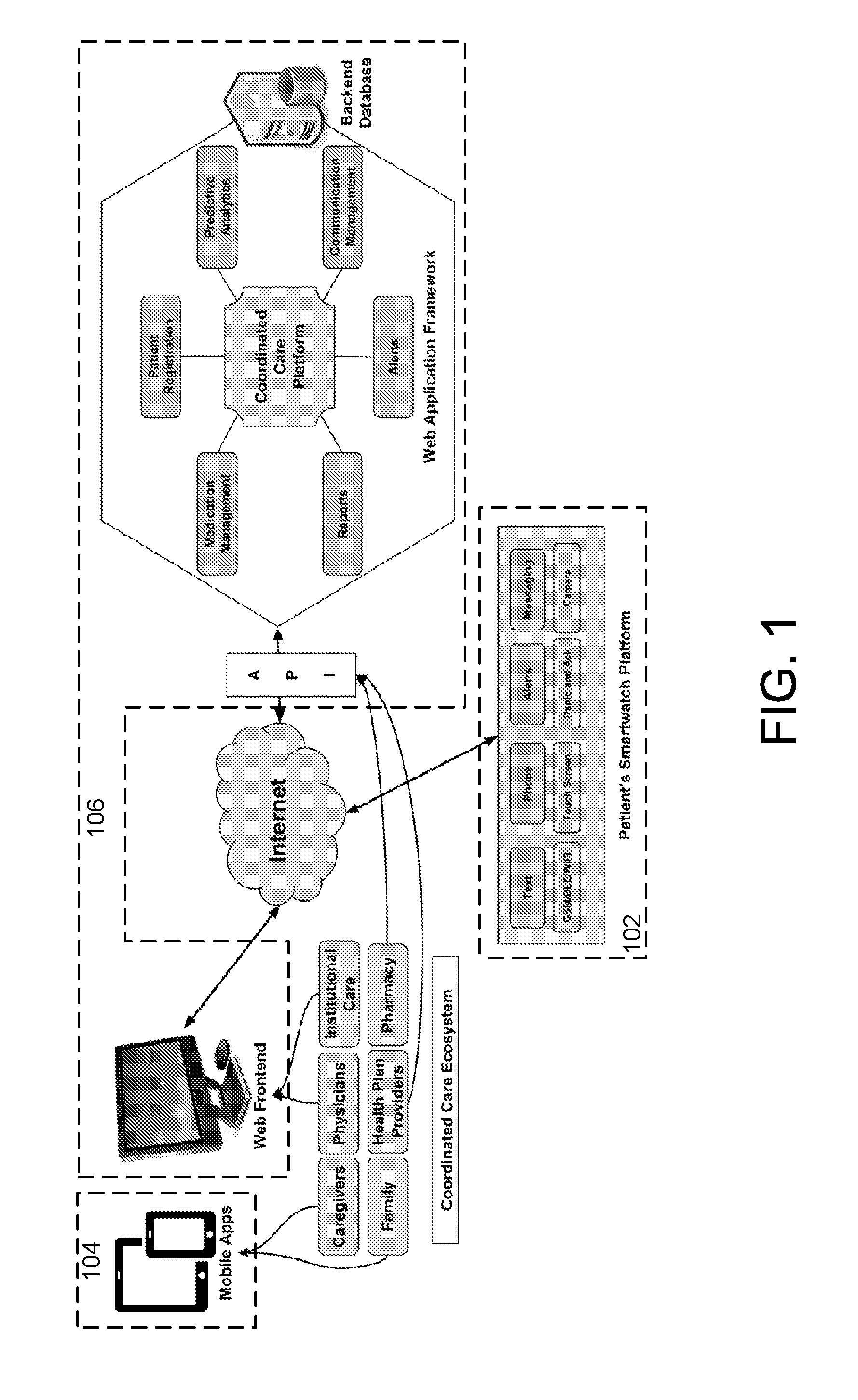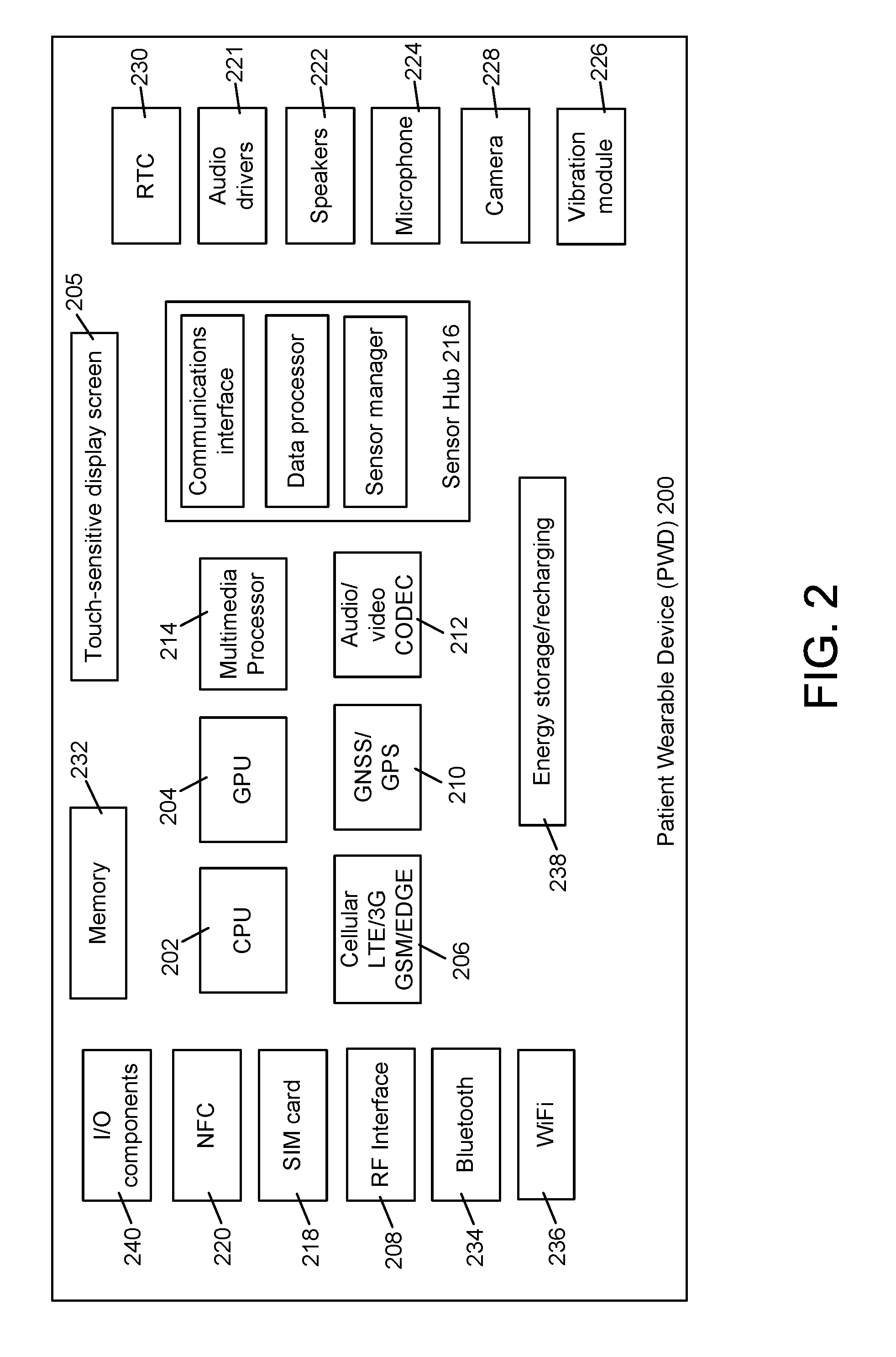Medication adherence device and coordinated care platform
a technology of medication adherence and coordinated care, which is applied in the direction of portable computer details, instruments, local control/monitoring, etc., can solve the problems of health care costs, medication non-adherence, confusion with the complexity of medication regimen, etc., and achieve the effects of reducing patient “in-person” visits, confirming drug effectiveness, and monitoring side effects
- Summary
- Abstract
- Description
- Claims
- Application Information
AI Technical Summary
Benefits of technology
Problems solved by technology
Method used
Image
Examples
Embodiment Construction
[0045]A description of example embodiments of the invention follows.
[0046]The teachings of all patents, published applications and references cited herein are incorporated by reference in their entirety.
[0047]An example embodiment of a Coordinated Care System (CCS) 100, shown in FIG. 1, includes a patient wearable device (PWD) 102, a caregiver mobile app 104, and a webserver 106. The caregiver mobile app 104 runs on a commercially-available platform such as a smartphone or electronic tablet. The webserver 106, which runs on a commercially-available platform such as a computer system or workstation, implements a coordinated care platform that seamlessly integrates the PWD, the caregiver mobile app, the webserver, and various third party providers (such as pharmacies and healthcare providers). The webserver 106 includes a web frontend, a server backend, a backend database and an application program interface (API). Target users for each of these components are shown in Table I.
TABLE I...
PUM
 Login to View More
Login to View More Abstract
Description
Claims
Application Information
 Login to View More
Login to View More - R&D
- Intellectual Property
- Life Sciences
- Materials
- Tech Scout
- Unparalleled Data Quality
- Higher Quality Content
- 60% Fewer Hallucinations
Browse by: Latest US Patents, China's latest patents, Technical Efficacy Thesaurus, Application Domain, Technology Topic, Popular Technical Reports.
© 2025 PatSnap. All rights reserved.Legal|Privacy policy|Modern Slavery Act Transparency Statement|Sitemap|About US| Contact US: help@patsnap.com



